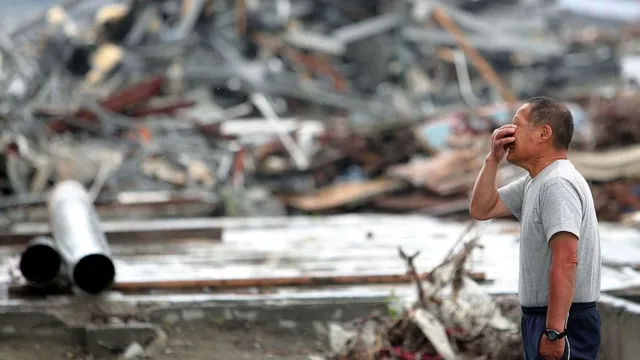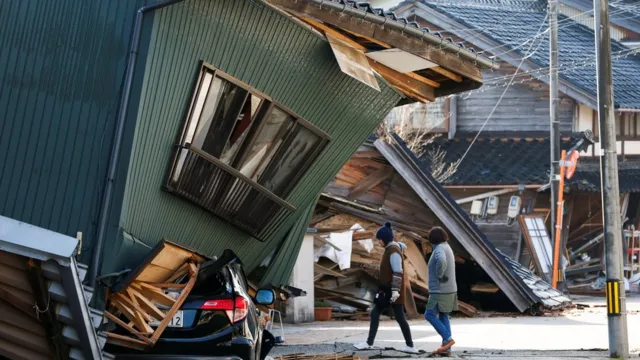It has been almost 13 years since the devastating earthquake and tsunami that resulted in a nuclear plant accident in Fukushima, Japan. The memories of that tragic event are still vivid in the minds of the Japanese people. On Monday, these memories were brought back into focus as tremors were felt in Ishikawa, accompanied by the alarming sound of tsunami warnings.
In Japan, such warnings are not uncommon. Initially, newcomers to the country, like myself, would be startled by the slightest tremor, quickly reacting to the shaking of our buildings. However, as time passed, one tends to adapt to the regular occurrence of earthquakes, even sleeping through them. In Japan, earthquakes become an integral part of daily life, and people learn to cope with them, though a lingering concern about the next significant quake and the safety of buildings persists.
For the current generation, the fears became a harsh reality on March 11, 2011. The earth shook for two long minutes in a way that no one had experienced within living memory. The prolonged shaking created an overwhelming sense of terror. The ordeal continued when, within 40 minutes, the first tsunamis struck, surging over sea walls and devastating towns and villages along Japan’s northeast coast for hundreds of kilometers. The live television coverage captured the unfolding disaster as a news helicopter hovered over the city of Sendai. The catastrophic events of that day left an indelible mark on the collective consciousness of the Japanese people.

The Great East Japan earthquake of 2011 left large swathes of the country in ruins
The subsequent day brought even more distressing news – a nuclear power plant was in crisis. The Fukushima meltdowns had initiated, compelling hundreds of thousands of people to evacuate their homes. Even Tokyo, the bustling capital, no longer felt secure. The events of that day left an enduring collective trauma.
In the months following the disaster, as I searched for a new place to live in Tokyo, my wife meticulously studied geological maps to identify areas with the sturdiest bedrock, preferably elevated and away from rivers. She fixated on the age of buildings, insisting, “We’re considering nothing built before 1981.” Once we settled into our 1985 building, we began stockpiling essential supplies, storing boxes of pre-packaged cartons with a shelf life of five years under the bathroom sink.
The fear and horror of 2011 would have resurfaced on Monday. However, this recent quake also tells a remarkable tale of Japan’s resilience. Japan doesn’t quantify earthquakes by magnitude; instead, it gauges how much the ground shakes on a scale from 1 to 7. In Ishikawa, on Monday, the shaking reached the maximum level of 7. While there was significant destruction of roads and bridges, the majority of buildings remained intact.
In large cities like Toyama and Kanazawa, life is gradually returning to normal. A friend in the nearby city of Kashiwazaki shared, “It was really terrifying – by far the biggest I have ever experienced here. We had to evacuate away from the coast. But we’re back home now, and everything is fine.” This narrative is a testament to Japan’s engineering success, a triumph that traces back to the seismic events of 1923 when a massive quake struck Tokyo.

Authorities have moved swiftly to restore transportation networks after Monday's quake
The subsequent day brought even more distressing news – a nuclear power plant was in crisis. The Fukushima meltdowns had initiated, compelling hundreds of thousands of people to evacuate their homes. Even Tokyo, the bustling capital, no longer felt secure. The events of that day left an enduring collective trauma.
In the months following the disaster, as I searched for a new place to live in Tokyo, my wife meticulously studied geological maps to identify areas with the sturdiest bedrock, preferably elevated and away from rivers. She fixated on the age of buildings, insisting, “We’re considering nothing built before 1981.” Once we settled into our 1985 building, we began stockpiling essential supplies, storing boxes of pre-packaged cartons with a shelf life of five years under the bathroom sink.
The fear and horror of 2011 would have resurfaced on Monday. However, this recent quake also tells a remarkable tale of Japan’s resilience. Japan doesn’t quantify earthquakes by magnitude; instead, it gauges how much the ground shakes on a scale from 1 to 7. In Ishikawa, on Monday, the shaking reached the maximum level of 7. While there was significant destruction of roads and bridges, the majority of buildings remained intact.
In large cities like Toyama and Kanazawa, life is gradually returning to normal. A friend in the nearby city of Kashiwazaki shared, “It was really terrifying – by far the biggest I have ever experienced here. We had to evacuate away from the coast. But we’re back home now, and everything is fine.” This narrative is a testament to Japan’s engineering success, a triumph that traces back to the seismic events of 1923 when a massive quake struck Tokyo.

